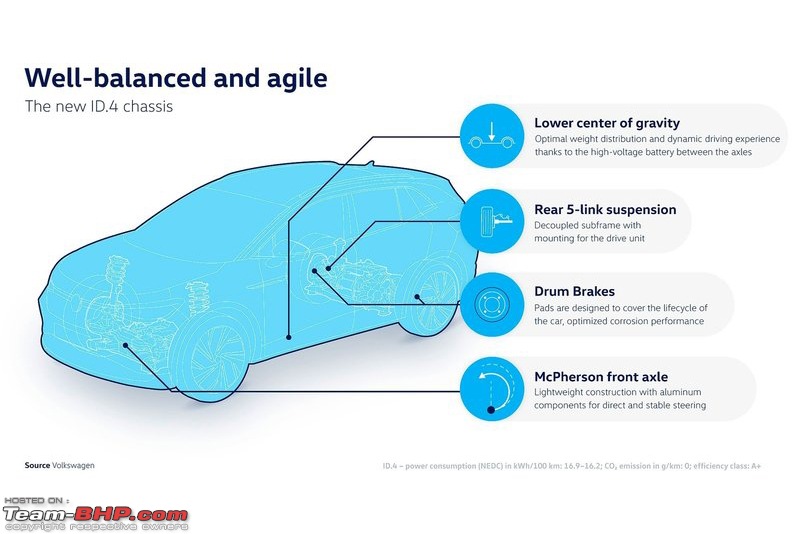News
Drum brakes making a comeback in electric cars?
All four disc brakes is a talking point for brands while selling new cars. But do drum brakes make more sense for electric cars?
BHPian Omkar recently shared this with other enthusiasts.
I remember reading a couple of years back that drum brakes might make a comeback in EVs. This might, in fact, turn into a reality. Let’s look at why drum brakes make more sense in an EV.Â
How drum brakes work
The mechanism consists of a drum that is connected to the wheel and rotates with it. Inside, you have brake shoes with brake linings on top of them. The brake linings are the friction material and are responsible for braking. Then you have a wheel cylinder which has a couple of pistons that are connected to both shoes.Â
The idea is simple. When you depress the brake pedal, the power from your foot isn’t enough, so it’s amplified through a hydraulic mechanism. You have a brake booster that multiplies the force and hydraulic pressure is transferred to the wheels through brake lines that are filled with brake fluid. The pressure reaches the wheel cylinder that pushes the pistons outwards and ergo the brake shoes and brake lining. The brake lining makes contact with the drum’s inside walls which slows down the wheel’s motion and stops the car.Â
Sounds like a simple and effective mechanism. So, what’s wrong with it?
The mechanism has some inherent flaws in it. Since this is a closed mechanism that’s dependent on friction, the heat generated when using brakes is retained. The lack of heat dissipation from the system can lead to faster brake fade. Also, in wet conditions, water might accumulate in the drum which means that the braking won’t be as effective.Â
Okay, so disc brakes are better?
In some ways, yes. Brake pedal feel and initial bite are much sharper in disc brakes than drum brakes. Not to forget, they’re lighter than drum brakes and thanks to the open design of the disc brake setup, heat is dissipated quickly. They last longer under heavy usage as compared to drum brakes and hence, most IC-engine cars, nowadays, have an all-wheel disc brake setup as standard.Â
Tata Punch.EV gets all-wheel disc brakes:

However, disc brakes have a more complex design with multiple components and require more maintenance than drum brakes. They are more expensive than drum brake setups and costlier to maintain as well.Â
So, what’s best for EVs?
Since EVs have become mainstream, there’s a slight difference in the way people view cars. EVs in general are considered as point A to point B cars that have a low cost of running. But in the context of braking, there’s one major aspect of EVs that differentiates them from IC-engine cars – Regenerative braking. Thanks to regen, most of the braking is taken care of by the motor itself and that exposes some flaws of the all-wheel disc brake setup.

The rear brakes usually provide ~30% of the braking force and the majority of the braking is handled by the front brakes. Add to the fact that in EVs the mechanical brakes aren’t used as much, and the rear brakes are barely used.Â
The less usage of rear brakes means that heating and brake fade also won’t be an issue. Also having disc brakes at the front takes care of most of the mechanical braking. So, with a drum brake setup at the rear and regular maintenance, the brake lining won’t need replacement for a very long time.Â
Since EVs also bank heavily on the environmental aspect, there’s also the case of brake dust that weighs in on this topic.Â
Up to 55% of roadside traffic pollution is made of non-exhaust particles, with around 20% of that pollution coming from brake dust. These particles may be just as damaging to our lungs as exhaust fumes.
Due to the open design of disc brakes, brake dust is released directly into the atmosphere. But since drum brakes have an enclosed setup, brake dust is collected inside the drum which can be cleaned during your regular service.Â
From theory to reality

It's not all theory, and some manufacturers have started adding drum brakes in their EVs. For starters, Volkswagen is using drum brakes at the rear for ID.3 and ID.4 EVs which are on sale internationally. Here’s an excerpt from the 2024 Volkswagen ID.4 media release for the United States:Â
A combination of brake types is used on ID.4. It features disc brakes on the front wheels and drums at the rear—the difference being specific to electric vehicle needs. As EVs rely on regenerative braking, the rear brakes get comparatively little use compared to a conventional ICE vehicle, plus there are friction advantages in using drums.

What do you think of the return of the drum brakes in EVs? Do share your thoughts.
Click here to read more BHPian comments & insights.



















